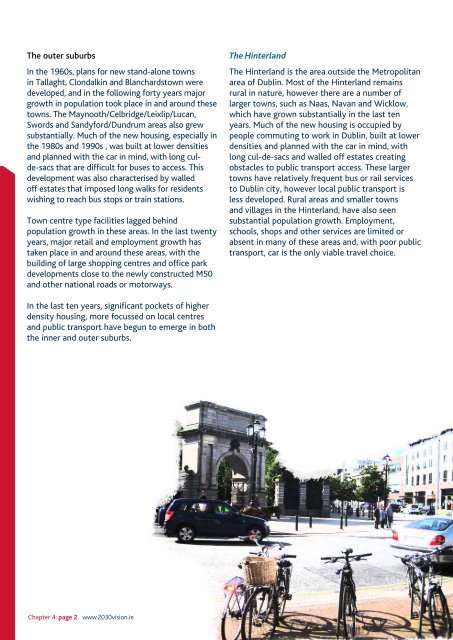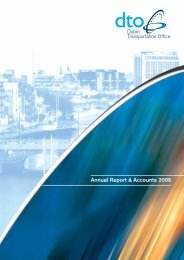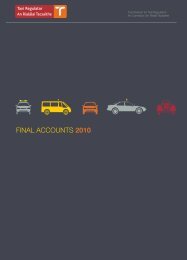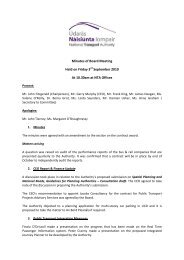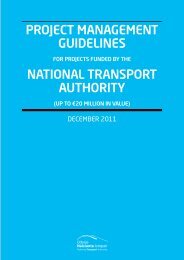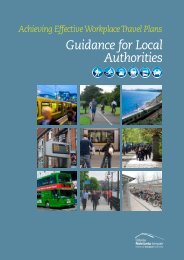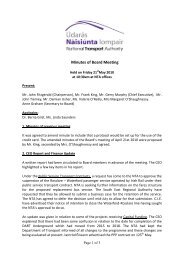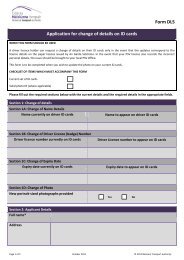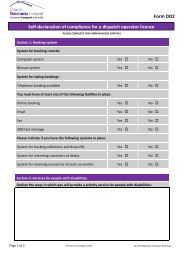Greater Dublin Area Draft Transport Strategy 2011-2030
Greater Dublin Area Draft Transport Strategy 2011-2030
Greater Dublin Area Draft Transport Strategy 2011-2030
- No tags were found...
Create successful ePaper yourself
Turn your PDF publications into a flip-book with our unique Google optimized e-Paper software.
The outer suburbsIn the 1960s, plans for new stand-alone townsin Tallaght, Clondalkin and Blanchardstown weredeveloped, and in the following forty years majorgrowth in population took place in and around thesetowns. The Maynooth/Celbridge/Leixlip/Lucan,Swords and Sandyford/Dundrum areas also grewsubstantially. Much of the new housing, especially inthe 1980s and 1990s , was built at lower densitiesand planned with the car in mind, with long culde-sacsthat are difficult for buses to access. Thisdevelopment was also characterised by walledoff estates that imposed long walks for residentswishing to reach bus stops or train stations.Town centre type facilities lagged behindpopulation growth in these areas. In the last twentyyears, major retail and employment growth hastaken place in and around these areas, with thebuilding of large shopping centres and office parkdevelopments close to the newly constructed M50and other national roads or motorways.The HinterlandThe Hinterland is the area outside the Metropolitanarea of <strong>Dublin</strong>. Most of the Hinterland remainsrural in nature, however there are a number oflarger towns, such as Naas, Navan and Wicklow,which have grown substantially in the last tenyears. Much of the new housing is occupied bypeople commuting to work in <strong>Dublin</strong>, built at lowerdensities and planned with the car in mind, withlong cul-de-sacs and walled off estates creatingobstacles to public transport access. These largertowns have relatively frequent bus or rail servicesto <strong>Dublin</strong> city, however local public transport isless developed. Rural areas and smaller townsand villages in the Hinterland, have also seensubstantial population growth. Employment,schools, shops and other services are limited orabsent in many of these areas and, with poor publictransport, car is the only viable travel choice.In the last ten years, significant pockets of higherdensity housing, more focussed on local centresand public transport have begun to emerge in boththe inner and outer suburbs.Chapter 4: page 2 www.<strong>2030</strong>vision.ie


